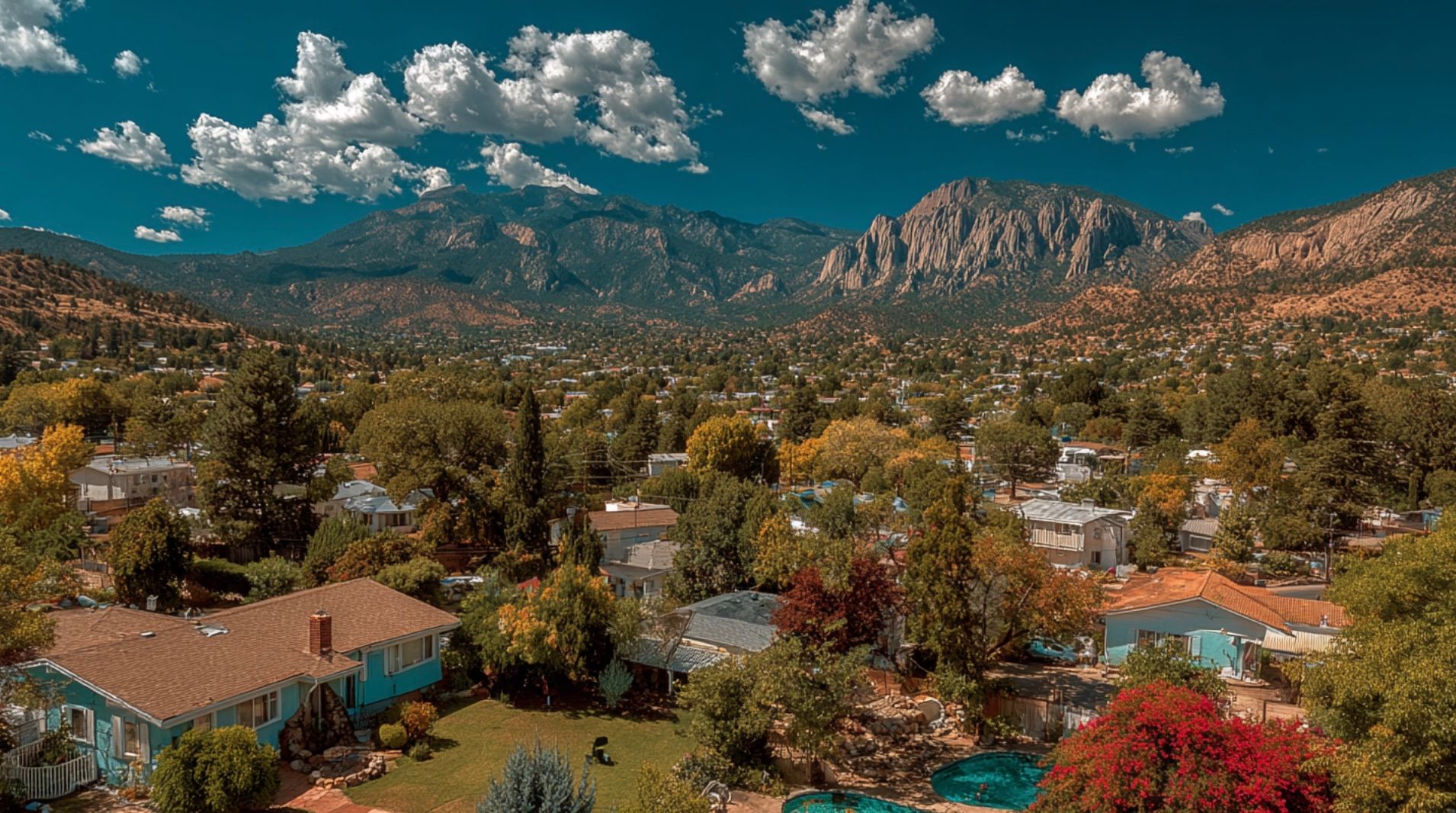If you are worried about Colorado Property Tax, then sit back and relax; property taxes in Colorado aren’t nearly as high as those in other states in the nation. Colorado, throughout its history, has had a relatively lower tax system than the rest of the lower 48 states, including a famous bill called the Taxpayer Bill of Rights (TABOR), which stipulated that the state government was not allowed to spend more than it collected. However, it must be noted that times have changed in Colorado, and in reality, the property tax you pay is determined first and foremost by which city or county you are located in. If you are looking at a flat in RINO subject to Denver property tax, or a mountain retreat in Telluride, you’ll need to know exactly what you are paying in property taxes and how to calculate it.
Looking for advice on short-term rentals and real estate in Colorado?
How are Colorado property taxes calculated?
Property taxes in Colorado are calculated using a formula that combines two core elements: the assessed value of your property and the mill levy applied by your local taxing district. This structure ensures that what you pay in taxes reflects both the market value of your home and the budget needs of your community, like schools, roads, fire protection, and local infrastructure.
Unlike states that charge a flat percentage based on property value, Colorado takes a more nuanced approach:
1. The county assessor estimates your property’s market value
This value is based on recent sales of comparable homes in your area and local real estate trends. It represents what your property would likely sell for on the open market.
2. The state applies an assessment rate
For most residential properties in Colorado, the assessment rate is 6.95%. This rate is multiplied by the market value to calculate your assessed value, which is the portion of your property that’s subject to taxation.
3. Local taxing authorities apply the mill levy
The mill levy is made up of individual rates set by different local entities, such as your city, county, school district, and special districts (like fire or water). These rates are added together to form a combined mill levy.
4. The mill levy is multiplied by your assessed value
One mill equals $1 in tax per $1,000 of assessed value. So, your total property tax bill is calculated by multiplying the assessed value of your home by the total mill levy in your area.
| This means that two homes with the same market value, say, $600,000, can have very different property tax bills depending on location. For example, a $600,000 home in Boulder may face a significantly higher tax burden than one in Colorado Springs, simply because Boulder’s mill levy is higher. Location matters just as much as value when it comes to property taxes in Colorado. |
Thank you!
Your STR inside scoop will land in your inbox soon!
Assessed value: What it is and how it’s determined
When it comes to calculating property taxes in Colorado, the assessed value is the cornerstone. It’s not the full market value of your home, but rather the portion of that value the state considers taxable. To determine it, Colorado applies a standardized assessment rate, which differs based on the type of property you own.
For residential properties, the 2025 assessment rate is 6.95%. This means that only a small fraction of your home’s market value is used to calculate your property taxes. In contrast, commercial properties (including some multi-unit buildings or STRs that get reclassified) are taxed at a much higher rate of 27.9%.
This distinction is especially important for Colorado real estate investors and Airbnb hosts. If your short-term rental property is categorized as commercial, your tax bill could be nearly four times higher, even if the market value of the property doesn’t change. Remember, administrative work can matter a lot in real estate, and if you get caught on the wrong side of tax classification regarding your property, it can be both time-consuming to fix and cost you money.
Example:
Let’s say you own a single-family home in Fort Collins with a market value of $700,000. If it’s classified as a residential property, your assessed value would be:
$700,000 × 6.95% = $48,650
That $48,650 is what your local government will use (along with the mill levy) to calculate your actual tax bill. But if the same property were reclassified as commercial, the assessed value would be:
$700,000 × 27.9% = $195,300
That’s a massive jump, and one that STR owners need to understand clearly when evaluating their tax liability.
Mill levy: The local tax rate multiplier
The mill levy represents how much local governments charge per $1,000 of assessed value. One mill = $1 per $1,000. Each county and district sets its own levy to fund schools, fire departments, road maintenance, and other services. Mill levies range widely across Colorado, from under 60 mills to over 110.
Continuing with the example above:
We’ve already calculated that the assessed value of a $700,000 residential home in Fort Collins is $48,650 (using the 6.95% residential assessment rate). Now, to estimate the property tax, we multiply that assessed value by the local mill levy, which in Fort Collins averages around 85.13 mills (or 0.08513 as a decimal).
Calculation:
$48,650 × 0.08513 = $4,142.52 in estimated annual property taxes.
This shows how the assessed value and mill levy come together to determine what you’ll actually owe each year. Even though the home’s market value is $700,000, only the assessed value is used in the final tax calculation.
Real-world tax estimates across Colorado counties
Here’s a table comparing estimated annual property taxes in 2025 for different home values across four Colorado counties using local average mill levies:
| County | Market Value | Assessed Value (6.95%) | Mill Levy | Estimated Annual Tax |
|---|---|---|---|---|
| Denver | $600,000 | $41,700 | 72.116 | $3,008 |
| Boulder | $600,000 | $41,700 | 90.000 | $3,753 |
| El Paso (CO Springs) | $600,000 | $41,700 | 70.000 | $2,919 |
| Summit (Breckenridge) | $600,000 | $41,700 | 110.000 | $4,587 |
Even with identical property values, location has a major impact on your final tax bill. That’s because each county in Colorado sets its own mill levy. The chart below shows how much a homeowner would pay annually in property taxes on a $600,000 home in four different counties, assuming the standard 6.95% residential assessment rate.
Short-term rentals and property taxes in Colorado
If you rent out your home through Airbnb, Vrbo, or a direct booking site, your tax situation becomes more complex. Beyond just collecting lodging and sales taxes, you may also face higher property taxes depending on how your property is used and classified. One of the biggest risks for short-term rental (STR) owners in Colorado is the possibility of reclassification from residential to commercial, an adjustment that can drastically increase your annual tax bill.
Residential vs. commercial classification
In Colorado, most homeowners pay property taxes based on the residential assessment rate of 6.95%. However, if your property is primarily used as a short-term rental and no longer serves as your primary residence, the local assessor could reclassify it as commercial, triggering a much higher 27.9% assessment rate.
This kind of reclassification often occurs when a property is rented out for more than 30 days per year or marketed in a way that resembles a hotel-like business. The financial impact can be significant.
Example:
Let’s say you own a mountain cabin in Breckenridge with a market value of $500,000.
- If the property is classified as residential, your assessed value would be:
$500,000 × 6.95% = $34,750
With a local mill levy of 110 mills (0.11), the annual tax would be:
$34,750 × 0.11 = $3,822
- If the property is reclassified as commercial, your assessed value jumps to:
$500,000 × 27.9% = $139,500
And the annual property tax becomes:
$139,500 × 0.11 = $15,345
That’s a difference of $11,523 per year, simply based on how the property is used and classified.
STR tax tip: How to avoid reclassification
The good news is that with proper planning and documentation, many STR owners can stay within residential classification and avoid a surprise tax hike. Here are some strategies to help minimize your risk:
- Limit rental activity to under 30 days per year, or maintain strong personal use of the property throughout the year.
- Designate part of the property as your primary residence, especially if you live on-site and rent only a portion.
- Keep detailed records of your usage, guest stays, and personal occupancy. If your classification is challenged, you’ll want documentation to support your claim.
- Avoid marketing your STR as a hotel-style business (e.g., offering concierge services or check-in desks), as this can trigger commercial scrutiny.
Colorado property tax exemptions and relief programs
Colorado offers several tax relief programs designed to ease the burden of rising property taxes, especially for older adults, veterans, and residents facing financial hardship. These programs can either reduce the taxable value of your home or defer the payment of your taxes altogether, depending on your eligibility.
While these exemptions don’t apply to everyone, they can lead to substantial annual savings for those who qualify. Below is a breakdown of the most common property tax exemptions and deferrals available in Colorado.
| Exemption | Eligibility | Benefit |
|---|---|---|
| Senior Homestead Exemption | 65+, 10-year primary residency | 50% exemption on first $200,000 of property value |
| Disabled Veteran Exemption | Service-connected disability, VA-certified | 50% exemption on first $200,000 of value |
| Property Tax Deferral | Over 65 or economic hardship | Defer taxes until sale or death of homeowner |
Deductions for investors and STR landlords
Real estate investors can reduce taxable income by deducting many property-related expenses.
- Mortgage interest: For a $450,000 loan at 6%, interest payments could top $25,000 in year one.
- Depreciation: $500,000 rental home = $18,181/year deduction over 27.5 years.
- Repairs & Maintenance: Leaky faucet, HVAC service, new paint? All deductible.
- Capital improvements: Must be depreciated, but add long-term value.
- Property management fees: Fully deductible if using a rental manager.
- Insurance premiums: STR, landlord, or liability coverage can be written off.
How to appeal your property tax assessment in Colorado
If you believe your property has been over-assessed, you can file an appeal to potentially lower your tax bill. This is especially useful in areas with fluctuating markets like Aspen or Steamboat Springs, where assessments may not reflect recent changes in value.
Many counties are seeing increases in property taxes, which can be difficult for property owners. As Pearl Lemon Properties Director Charles Whitehead explains, the easiest approach to dealing with this rise is understanding the details of your property tax statement.
“Review the assessed value first, then compare it with similar properties in your neighbourhood. You could appeal the evaluation if you think it’s too high. Another smart move is to create a budget for the tax increase and look into any possible exemptions or deductions your county may provide. Speaking with a local real estate expert can also give you information about local tax laws and property prices.”
Colorado vs other states: Where property taxes stand
On paper, Colorado has one of the lowest effective property tax rates in the country, typically around 0.5% of a home’s market value. That’s well below the national average of roughly 1.1%. However, don’t let that percentage fool you. Colorado’s high mill levies, combined with rapidly increasing home values in many counties, mean that actual tax bills can still be substantial.
For homeowners and investors relocating from high-tax states like Texas or California, Colorado can offer a relative break. But compared to other low-tax states like Arizona, the gap is narrower once you factor in local mill levy policies and market volatility.
Here’s how Colorado stacks up against a few neighboring and comparable states:
Property taxes in Colorado are not that bad, but pay attention
Some property owners are managing a portfolio of short-term rentals in the mountains that take advantage of both the ski season as well as the various bluegrass and jam music festivals that take place in different locations during the summer. Others are buying their very first home in Denver, ready to expand their family. No matter the situation, understanding how Colorado’s property tax system works is the first step in due diligence before buying real estate, and can protect the most important item: your bottom line.
By planning ahead, taking advantage of available exemptions, and keeping detailed records of how your property is used, you’ll be better positioned to lower your tax burden and improve your cash flow. And when things get complicated, working with a knowledgeable property manager or tax advisor can help you get a handle on a sometimes complex real estate marketplace.
FAQ
How often are property values reassessed in Colorado?
In Colorado, property values are reassessed every two years by the county assessor’s office, with valuations based on data from an 18-month period prior to June 30 of the year before the reappraisal. This means your 2025 property taxes are based on market conditions between January 1, 2022, and June 30, 2023. If property values in your area have surged, you may see a higher assessed value even if you haven’t made improvements.
Are property taxes higher for second homes or vacation properties?
Colorado does not automatically charge higher property taxes on second homes or vacation properties, as long as they’re used primarily for personal use. However, if you rent out the property as a short-term rental for more than 30 days per year or operate it like a commercial business, it may be reclassified as commercial, raising the assessment rate and increasing your tax liability significantly.
Can HOA fees be deducted from property taxes?
HOA (Homeowners Association) fees are not deductible against your property tax bill, but they may be deductible as a business expense if the property is used as a rental. For STR owners or real estate investors, HOA fees can typically be written off as an operating expense when filing income taxes. This doesn’t reduce your property taxes directly, but it can lower your overall taxable income.




